
Schloss Isenburg: Offenbach's Renaissance Jewel
Discover Schloss Isenburg, Offenbach's Renaissance palace, a vibrant hub of history, art, and culture, home to the Hochschule für Gestaltung, and a landmark of architectural significance.
Schloss Isenburg, a striking Renaissance palace in the heart of Offenbach, stands as a testament to the city's rich history and cultural significance. Built in the 16th century by the Counts of Isenburg, this architectural gem has witnessed pivotal moments in Offenbach's development, from housing Swedish King Gustav Adolf during the Thirty Years' War to fostering progressive economic ideas that propelled the city ahead of Frankfurt. Today, the palace serves as home to the Hochschule für Gestaltung (HfG), an art school, blending historical grandeur with contemporary creativity. Its distinctive red brick facade, intricate Renaissance detailing, and the enchanting cultural stories woven within its walls make it a must-see destination for any visitor seeking to immerse themselves in Offenbach's unique heritage. Explore the palace's captivating architecture, wander through its historic halls, and discover the artistic spirit that thrives within this remarkable landmark.
A brief summary to Schloss Isenburg
- Schloßstraße 66, Offenbach, Frankfurt-Ost, 63065, DE
- Visit website
Local tips
- Check the Hochschule für Gestaltung (HfG) website for public events or exhibitions that may be held at the Schloss, offering a glimpse inside.
- Stroll along the Main River for picturesque views of the Schloss Isenburg, especially beautiful during sunset.
- Explore the nearby Büsingpark and Büsing Palais for a pleasant day of sightseeing and relaxation.
Getting There
-
Public Transport
From Offenbach Marktplatz S-Bahn station, it's a short walk to Schloss Isenburg. Exit the station and walk southwest towards the river Main. The Schloss is easily visible and is approximately a 5-10 minute walk. A single ticket within Offenbach costs approximately €2.80.
-
Walking
From the Offenbach city center, Schloss Isenburg is easily accessible on foot. Follow signs towards the Main River. The Schloss is located on Schloßstraße, a short walk from the city's main shopping streets. The walk is generally flat and takes around 10-15 minutes from Wilhelmsplatz.
-
Taxi/Ride-Share
A taxi or ride-share from anywhere in central Offenbach to Schloss Isenburg will typically cost between €8-€12, depending on traffic and the specific starting point.
-
Parking
Parking is available near Schloss Isenburg, with options including Q-Park City Parkhaus and Q-Park Marktplatz. Daily parking fees can range up to €16. Street parking is also available, but check for parking fees and restrictions.
Discover more about Schloss Isenburg
Iconic landmarks you can’t miss
Schloss Isenburg
0.0 km
Explore the rich history and stunning architecture of Schloss Isenburg, a must-see historical landmark in Offenbach am Main, Germany.

Goetheturm
4.4 km
Experience breathtaking views of Frankfurt's skyline and serene nature at Goetheturm, a perfect retreat for tourists and nature lovers alike.

European Central Bank
4.4 km
Explore the European Central Bank in Frankfurt, a modern architectural marvel and the heart of Europe's financial stability.

Klappergass'-Brunnen
5.3 km
Discover the Klappergass' Fountain in Frankfurt's Sachsenhausen: a historic landmark offering a tranquil escape and a glimpse into the city's rich cultural heritage.
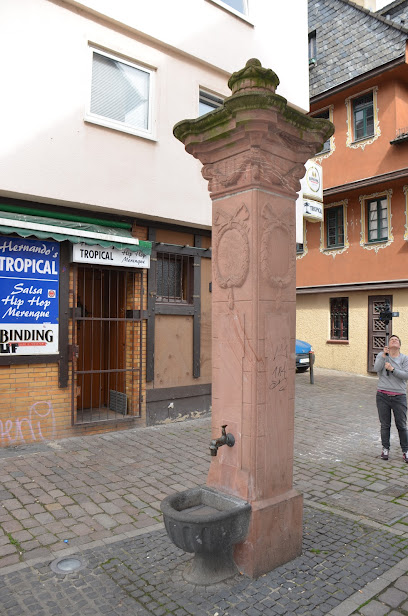
Carolusbrunnen
5.3 km
Discover the Carolusbrunnen in Frankfurt's Sachsenhausen: a historical fountain honoring Charlemagne, reflecting the city's rich heritage and commitment to public art.
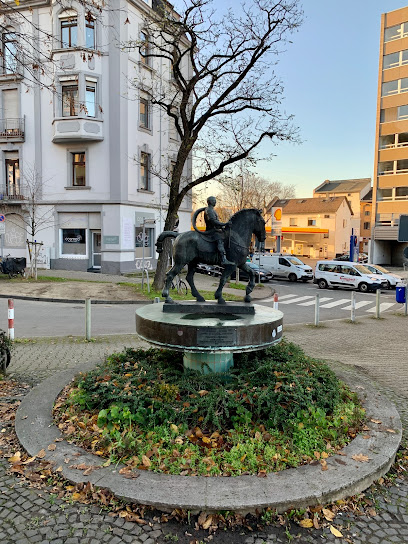
Affenbrunnen
5.3 km
Discover the whimsical charm of Frankfurt's Affenbrunnen, a historic fountain in Sachsenhausen, where playful monkey sculptures meet traditional apple wine culture.
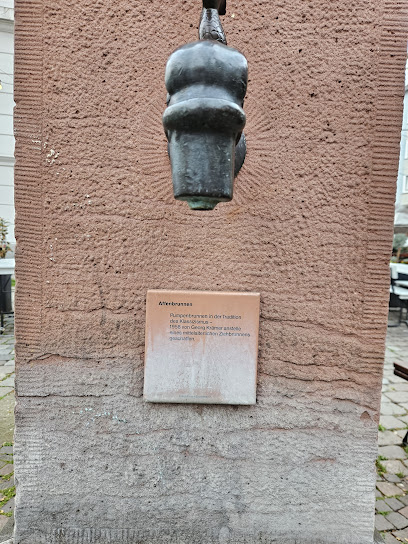
Zunftbrunnen
5.4 km
Discover Frankfurt's artisan heritage at the Zunftbrunnen, a bronze tribute to the city's trade guilds, nestled in the heart of Sachsenhausen's traditional charm.

Lohr Park
5.5 km
Discover Frankfurt's highest park: panoramic views, vineyards, and family fun await at Lohr Park, a green oasis offering a tranquil escape from the city bustle.
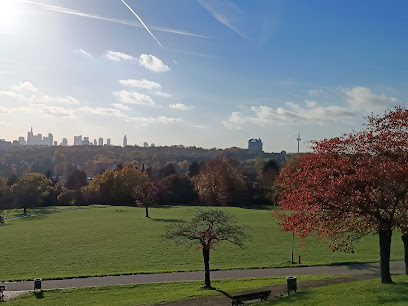
Charlemagne Monument
5.5 km
Explore the Charlemagne Monument in Frankfurt, a stunning tribute to history and culture that captivates visitors with its grandeur and significance.

Alte Brücke
5.5 km
Discover the Alte Brücke, Frankfurt's historic bridge offering stunning views and a glimpse into the city's architectural heritage.
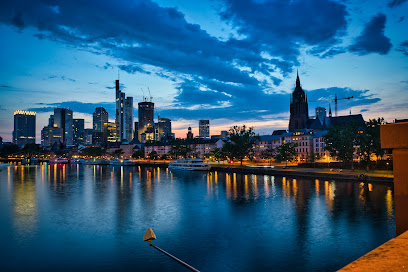
Hessendenkmal
5.5 km
Explore Hessendenkmal in Frankfurt, a serene memorial park that beautifully blends nature and history, perfect for moments of reflection and relaxation.
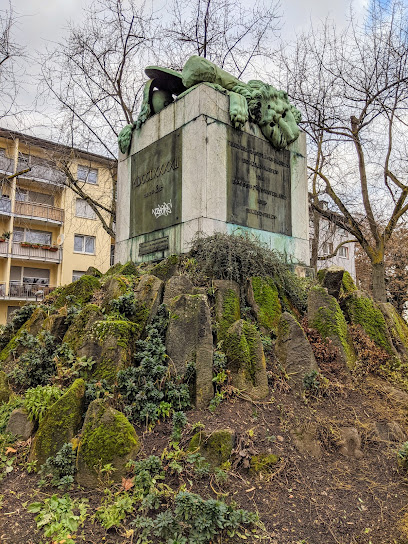
Mainkai
5.9 km
Discover Frankfurt's vibrant heart on Mainkai, a scenic riverside promenade blending history, culture, and stunning views of the Main River and city skyline.
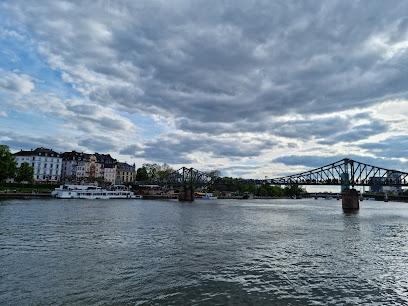
Brockhaus Fountain
5.9 km
Discover the captivating Brockhaus Fountain on Frankfurt's Zeil, a unique marble sculpture blending modern motifs with artistic tradition in the heart of the city's bustling shopping district.
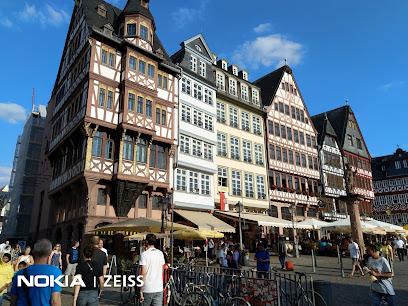
Historisches Museum Frankfurt
5.9 km
Explore Frankfurt's captivating history at the Historisches Museum, from Roman settlements to a modern metropolis, through immersive exhibits and historical artifacts.
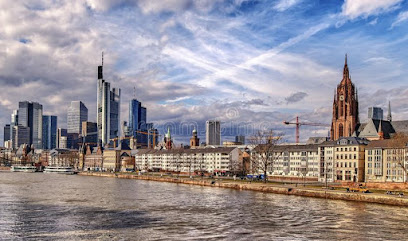
Eiserner Steg
5.9 km
Walk across Frankfurt's iconic Eiserner Steg, a historic bridge adorned with love locks, offering stunning skyline views and connecting the city's vibrant heart with the charming Sachsenhausen district.
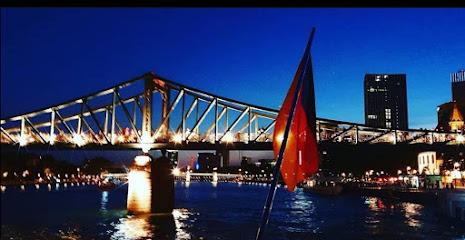
Unmissable attractions to see
Deutschherrnbrücke
4.3 km
Experience the historic charm and breathtaking views at Deutschherrnbrücke, a stunning bridge in Frankfurt connecting vibrant districts over the River Main.
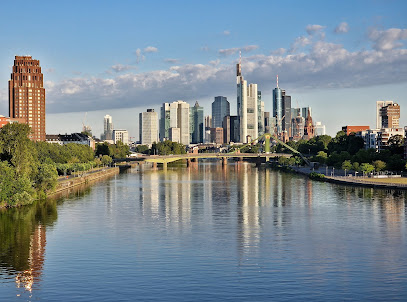
The English Theatre Frankfurt
4.8 km
Experience world-class English-language theater at The English Theatre Frankfurt, a cultural landmark offering diverse performances in an intimate setting.
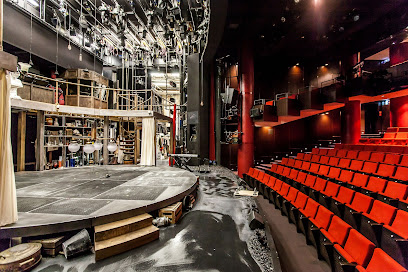
Zoo Frankfurt
4.8 km
Discover the rich biodiversity and educational experiences at Zoo Frankfurt, a premier destination for families and wildlife enthusiasts in the heart of Germany.
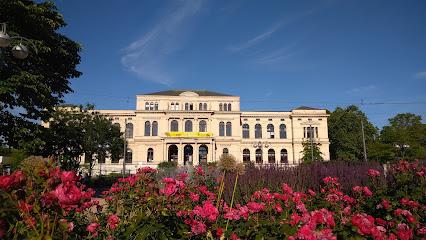
Literaturhaus Frankfurt
5.1 km
Experience the rich literary culture at Literaturhaus Frankfurt, where literature, art, and community come together in a charming setting.

Ignatz-Bubis-Brücke
5.2 km
Discover the Ignatz-Bubis-Brücke, a stunning pedestrian bridge in Frankfurt, offering breathtaking views and a vibrant atmosphere, perfect for every tourist.
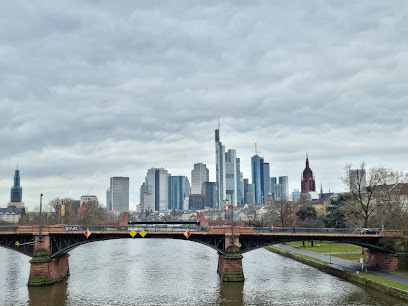
Alt-Sachsenhausen
5.3 km
Discover the historic charm of Alt-Sachsenhausen, Frankfurt's traditional district filled with apple wine taverns and cultural treasures.
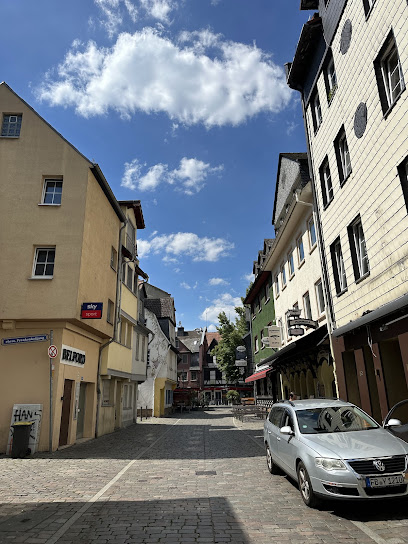
Old Jewish Cemetery frankfurt am main
5.3 km
Explore the Old Jewish Cemetery in Frankfurt: A solemn tribute to the city's rich Jewish heritage and a peaceful retreat for reflection and history.
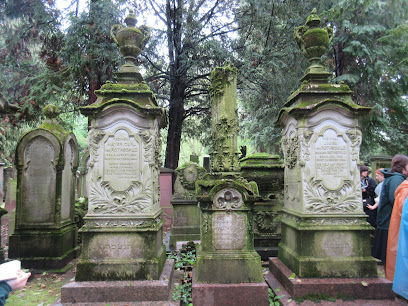
Bethmann Fountain
5.4 km
Discover the tranquility of Bethmann Fountain, a beautiful urban oasis in Frankfurt, perfect for relaxation and cultural exploration.
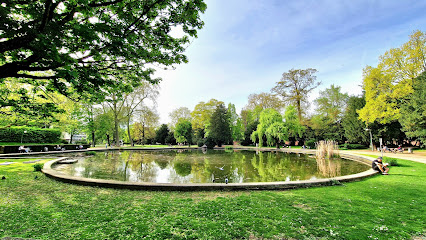
Bethmann Park
5.4 km
Experience the lush beauty and cultural charm of Bethmann Park, a serene oasis in the heart of Frankfurt perfect for relaxation and exploration.
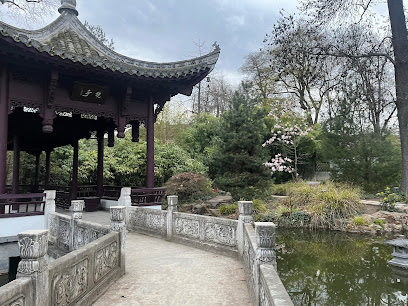
Museum Judengasse
5.5 km
Discover the rich Jewish heritage of Frankfurt at Museum Judengasse, a captivating historical museum showcasing culture and community.
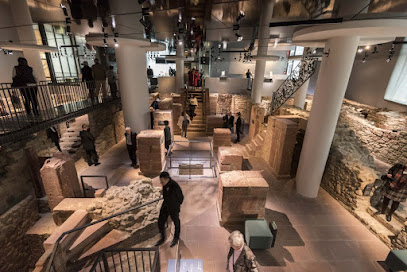
Museumsufer
5.5 km
Explore the rich cultural landscape of Museumsufer in Frankfurt, home to world-class museums and vibrant artistic experiences along the River Main.
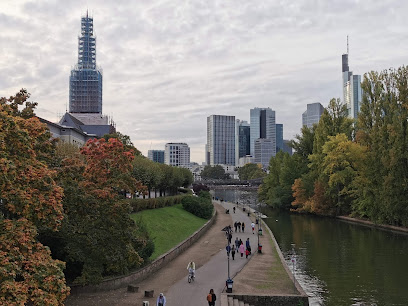
Skyline Frankfurt City
5.5 km
Experience breathtaking views of Frankfurt's skyline and immerse yourself in the vibrant urban culture at Skyline Frankfurt City.
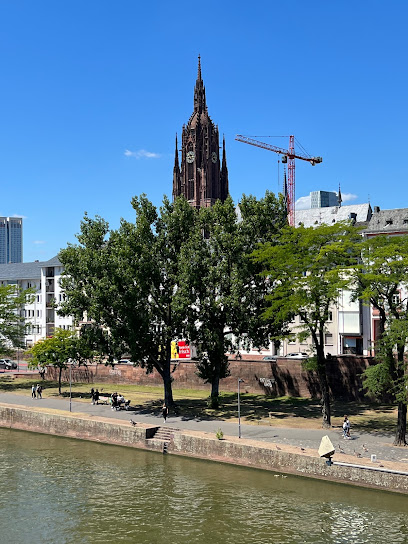
Portikus
5.5 km
Discover the captivating blend of contemporary art and natural beauty at Portikus, Frankfurt's premier art museum on the Main River.
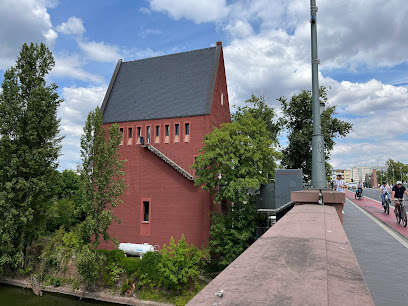
Dreikönigskirche
5.6 km
Explore the architectural beauty and spiritual tranquility of Dreikönigskirche, a must-visit Evangelical church in Frankfurt.
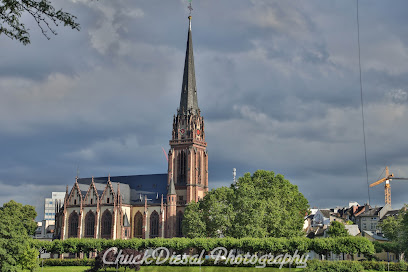
Oldest Tudor-style house in Frankfurt
5.6 km
Discover the oldest Tudor-style house in Frankfurt, a charming blend of history and architecture in the heart of the city.
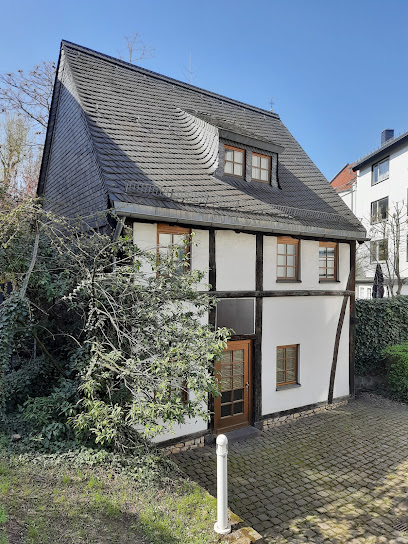
Essential places to dine
New Brick Californian Restaurant
4.9 km
Experience exquisite steaks and vibrant Californian cuisine at New Brick Californian Restaurant in Frankfurt am Main Süd.
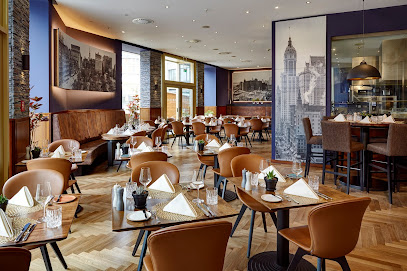
Restaurant Goldmund in the Literaturhaus
5.1 km
Discover the culinary charm of Restaurant Goldmund in Frankfurt's Literaturhaus - where exquisite flavors meet literary elegance.
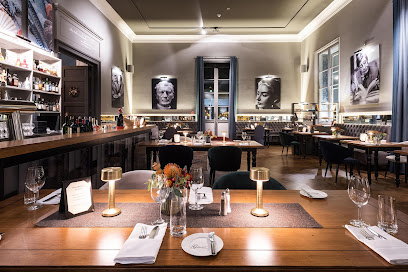
Muku
5.2 km
Experience authentic Japanese cuisine at Muku in Frankfurt am Main – where traditional flavors meet modern dining.
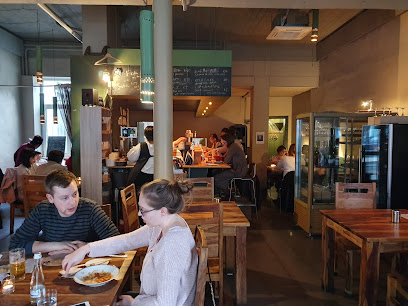
Maindiner
5.2 km
Experience culinary excellence at Maindiner in Frankfurt am Main - where steak lovers find their paradise with exquisite cuts and exceptional service.
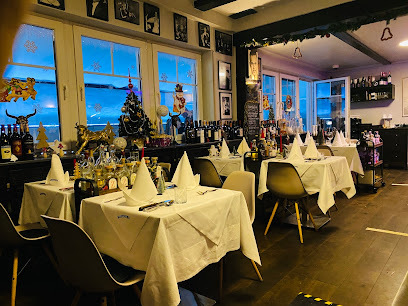
Adabina Kitfo Ethiopian Restaurant
5.2 km
Discover the rich flavors of Ethiopia at Adabina Kitfo in Frankfurt - a hidden gem offering delicious food and vibrant cultural experiences.
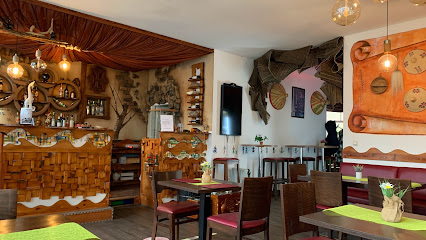
Restaurant Schöne Aussicht Frankfurt am Main
5.2 km
Experience authentic Mediterranean flavors at Restaurant Schöne Aussicht in Frankfurt's charming Bergen-Enkheim district.

GIOIA
5.4 km
Experience authentic Italian flavors at GIOIA in Frankfurt—where every meal is a celebration of Mediterranean cuisine.
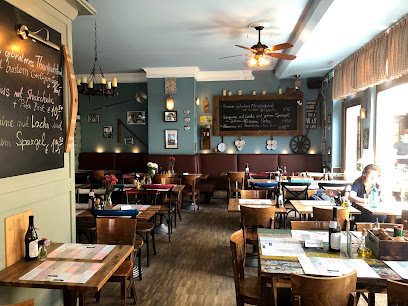
Jasper's
5.4 km
Discover exquisite French cuisine at Jasper's in Frankfurt - where culinary artistry meets elegant dining.
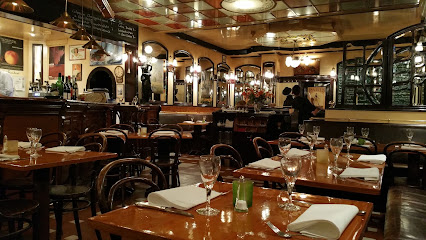
Gaststätte Atschel
5.4 km
Experience authentic German cuisine at Gaststätte Atschel in Frankfurt - where tradition meets flavor in every dish.
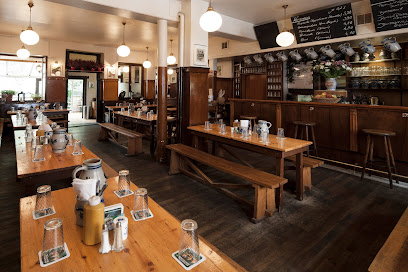
Ebbelwoi Unser
5.5 km
Experience authentic German cuisine at Ebbelwoi Unser in Frankfurt; a culinary haven for food lovers seeking traditional flavors.

Ariston Restaurant
5.5 km
Discover authentic Greek cuisine at Ariston Restaurant in Frankfurt – where every meal is a delightful journey through Mediterranean flavors.
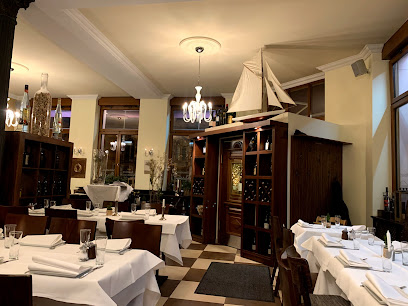
Kanonesteppel
5.5 km
Experience authentic German cuisine at Kanonesteppel in Frankfurt am Main – where tradition meets modern dining.
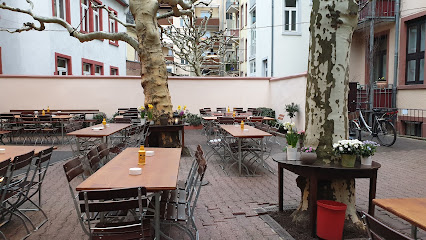
Restaurant l’Ecume
5.5 km
Discover fine French cuisine at Restaurant l’Ecume in Frankfurt - where culinary artistry meets elegant dining.
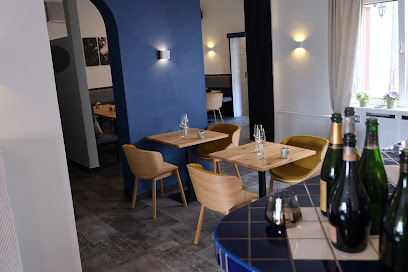
Coq Au Vin
5.5 km
Savor authentic French cuisine at Coq Au Vin, where every dish tells a story and every meal is an experience.
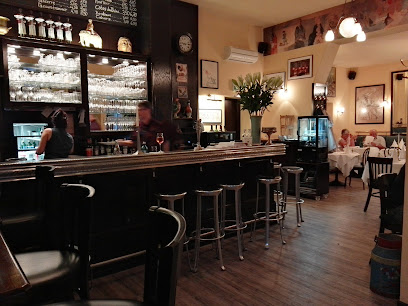
Osteria L'isola Sarda
5.5 km
Experience authentic Italian cuisine at Osteria L'isola Sarda, where every dish celebrates Italy's rich culinary heritage in Frankfurt.
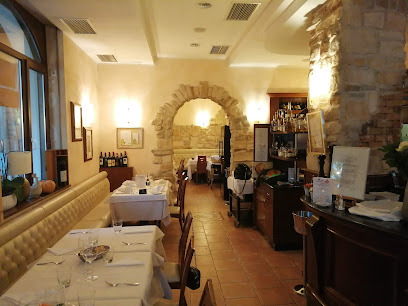
Markets, malls and hidden boutiques
Hessen-Center Frankfurt
3.7 km
Explore Hessen-Center Frankfurt, the ultimate shopping destination with a variety of stores, delicious dining, and a vibrant atmosphere.

Kaufhaus Hessen
4.4 km
Explore Kaufhaus Hessen, a charming novelty store and café in Frankfurt, perfect for unique souvenirs and local delights.
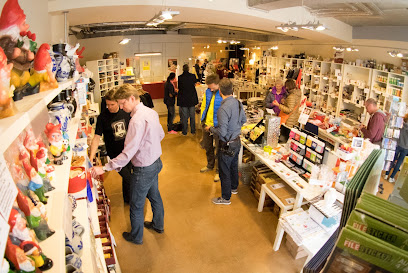
wunderwerk store Frankfurt am Main
5.1 km
Explore sustainable fashion at Wunderwerk Store in Frankfurt – where style meets eco-consciousness in a chic shopping experience.
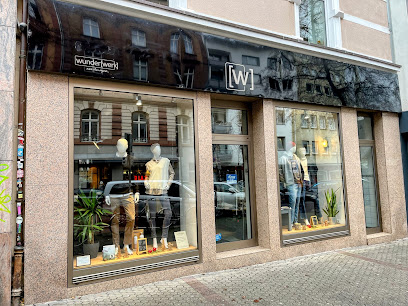
epiphany - Vintage & More
5.2 km
Explore Epiphany – Vintage & More in Frankfurt for unique, sustainable fashion treasures that tell a story and elevate your style.
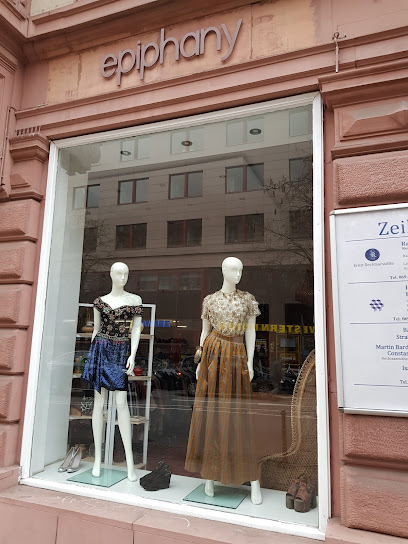
Main Store Designer & Streetwear Boutique
5.2 km
Discover unique streetwear and contemporary fashion at the Main Store Designer & Streetwear Boutique in the heart of Frankfurt.
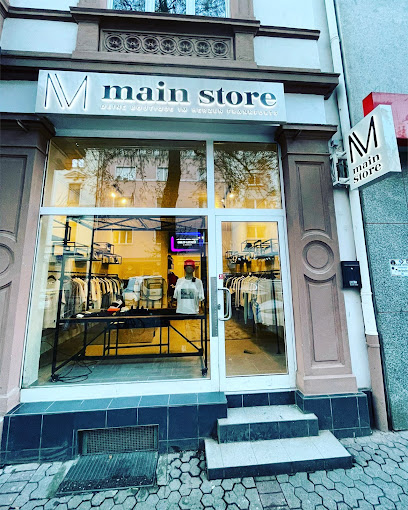
Bembel-Lampe
5.3 km
Discover Bembel-Lampe, Frankfurt's premier gift shop offering locally crafted pottery and unique souvenirs that embody the city’s rich culture.

OLA Vintage & Second Hand Ware
5.5 km
Uncover unique vintage clothing treasures at OLA Vintage & Second Hand Ware in Frankfurt, your go-to thrift store for sustainable fashion finds.

justfans
5.5 km
Explore JustFans in Frankfurt – your go-to destination for unique gifts, fashion accessories, and local design treasures.

Ookoko Concept Store
5.5 km
Explore the vibrant fashion scene at Ookoko Concept Store in Frankfurt am Main, where unique designs meet stylish elegance.
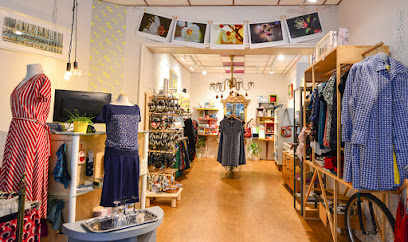
Maripo -Ookoko
5.5 km
Explore Maripo / Ookoko for unique souvenirs in Frankfurt, capturing the city's spirit through handcrafted treasures and local artistry.

o.t.b.t. off the beaten track
5.6 km
Explore Frankfurt's hidden gem for unique, locally crafted gifts and souvenirs at o.t.b.t. off the beaten track.
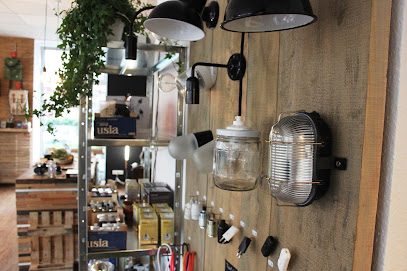
KIO - Kaufhaus im ORT
5.6 km
Explore KIO - Kaufhaus im ORT, an enchanting gift shop in Frankfurt offering unique treasures and local crafts, perfect for every traveler.

esistfreitag Concept Store
5.7 km
Explore Frankfurt's esistfreitag Concept Store for unique gifts and creative designs that capture the spirit of artistic innovation.
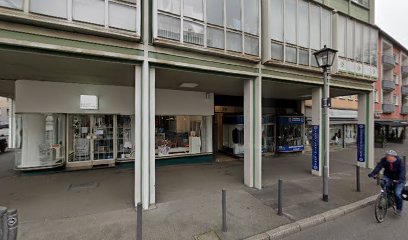
Jonh book shop
5.7 km
Explore Jonh Book Shop in Frankfurt: a cozy bookstore filled with diverse literature and a warm atmosphere perfect for book lovers.
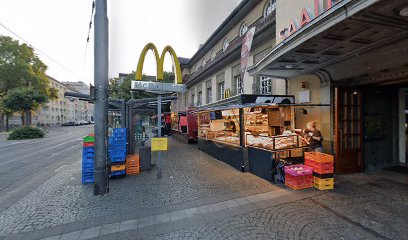
Souvenirs am Dom
5.7 km
Discover unique gifts and local crafts at Souvenirs am Dom, the perfect place to find keepsakes from Frankfurt.
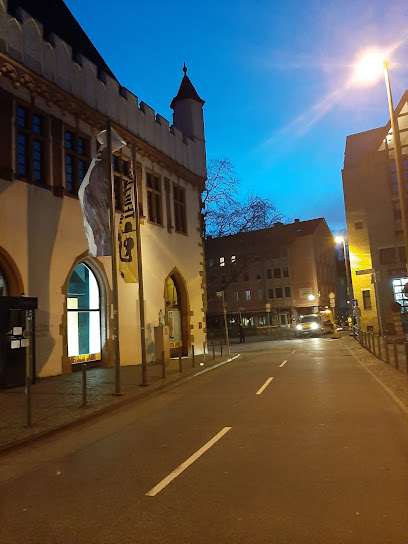
Essential bars & hidden hideouts
Main Cocktail Bar
4.5 km
Discover the perfect blend of fine cocktails and lively ambiance at Main Cocktail Bar, a must-visit destination in Frankfurt.
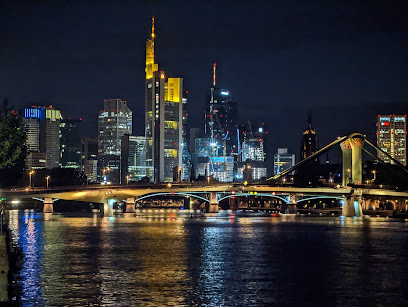
Harry's New York Bar - Frankfurt am Main
5.0 km
Discover the vibrant atmosphere of Harry's New York Bar in Frankfurt, blending American charm with local flair for an unforgettable night out.

Old Fritz - Frankfurt am Main
5.0 km
Experience the vibrant nightlife at Old Fritz, a beloved bar in Frankfurt, known for its lively atmosphere and diverse drink selection.
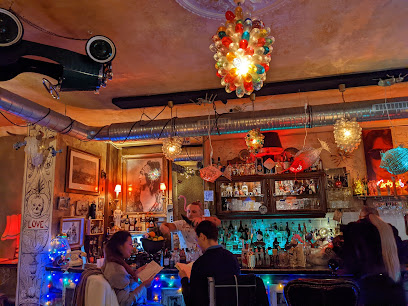
Speak Easy
5.2 km
Discover the charm of Speak Easy, a cozy pub in Frankfurt-Süd, offering local brews and a vibrant atmosphere perfect for unwinding after exploring the city.
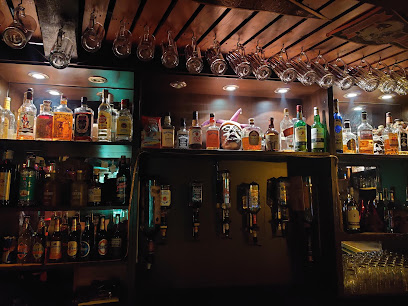
Berliner Keller Frankfurt
5.3 km
Experience the vibrant nightlife of Frankfurt at Berliner Keller, where exquisite cocktails and live music create unforgettable moments.
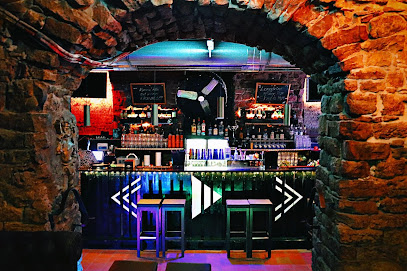
Antony's Bar - Frankfurt am Main
5.3 km
Experience the vibrant nightlife of Frankfurt at Antony's Bar, known for its exquisite cocktails, stylish atmosphere, and welcoming vibe.
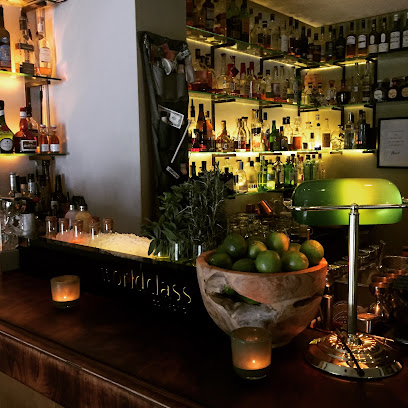
Harmonie Pub Sachsenhausen - Frankfurt am Main
5.3 km
Discover the lively ambiance and rich beer culture at Harmonie Pub Sachsenhausen in Frankfurt, a must-visit destination for all travelers.
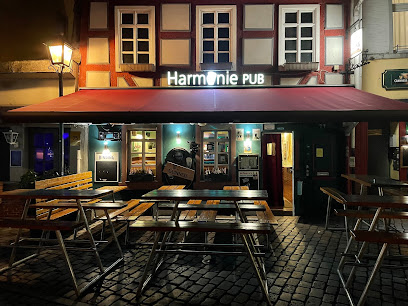
Alte Liebe
5.3 km
Discover the heart of Frankfurt's nightlife at Alte Liebe Bar, where cozy ambiance meets a lively social scene and delectable drinks.

HOT
5.3 km
Explore Frankfurt's nightlife at HOT Bar, where vibrant energy meets excellent drinks in a welcoming atmosphere perfect for socializing.
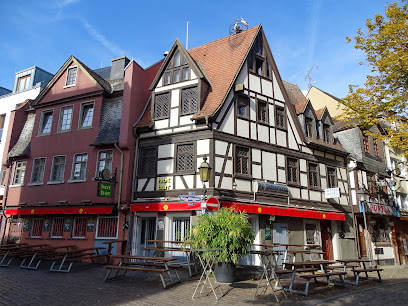
Crazy Bar
5.3 km
Discover Crazy Bar in Frankfurt, where vibrant nightlife meets affordable drinks and an unforgettable atmosphere.
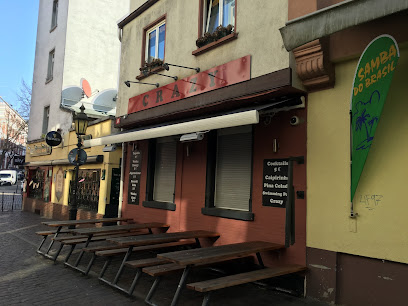
Baile Bar
5.3 km
Discover the energetic nightlife of Frankfurt at Baile Bar, where exquisite cocktails and a vibrant atmosphere await.
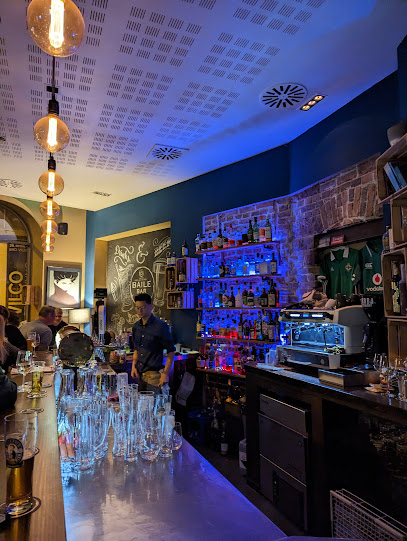
Long Island Bar
5.3 km
Discover the vibrant nightlife at Long Island Bar in Frankfurt, known for its exceptional cocktails and lively atmosphere.
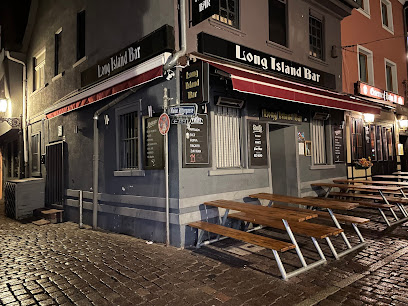
Old Fashioned Bar - Frankfurt am Main
5.3 km
Discover the Old Fashioned Bar in Frankfurt, where cocktails meet culture in a vibrant, stylish setting perfect for a night out.
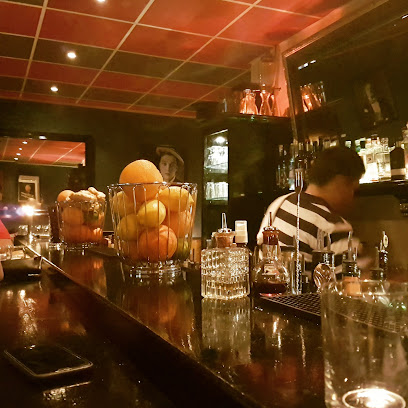
Memories Frankfurt
5.3 km
Explore the vibrant nightlife of Frankfurt at Memories Frankfurt, where exquisite cocktails and a lively atmosphere await you.
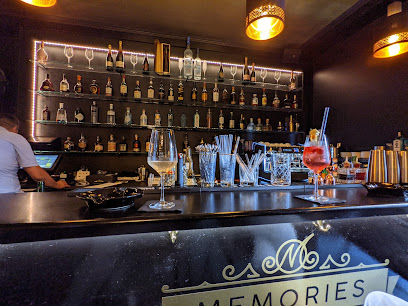
Barkello by le PANTHER
5.4 km
Experience the vibrant nightlife at Barkello by le PANTHER, Frankfurt's chic cocktail bar and lounge offering an exceptional drink selection.




